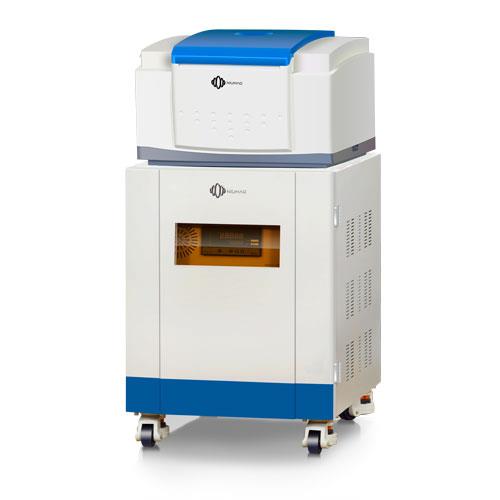Contenido de grasa sólida RMN
Contenido de grasa sólida Principio
Contenido de grasa sólida (SFC) determination serves as a fundamental analysis within the food industry, playing a crucial role in both managing and maintaining the quality of various fats and oils. In contrast to conventional extraction techniques, which suffer from drawbacks like sluggishness, lack of reproducibility, and the necessity for supplementary chemicals, the utilization of Nuclear Magnetic Resonance (RMN) for the direct measurement of contenido de grasa sólida (SFC) offers a remarkable solution. This innovative approach guarantees both swiftness and precision in assessing the contenido de grasa sólida (SFC) valor.
The principle behind contenido de grasa sólida (SFC) determination via NMR hinges on a direct ratio measurement between the solid and liquid constituents of the sample. The swiftness of this technique is underscored by the fact that a single measurement can be completed in under 30 segundos. The SFC value is established for a range of temperatures, commencing from 0 °C. The behavior of the resulting melting curve serves to describe the content and quality of the fat under scrutiny.
Contenido de grasa sólida Measuring Experiment
The NIUMAG PQ001 benchtop NMR analyzer, integrated with a 10 mm test tube, emerges as the instrument of choice for conducting contenido de grasa sólida (SFC) mediciones. This preference is attributed to the impeccable technical attributes of the device, which contribute to its high reproducibility and accuracy. Notablemente, the PQ001 aligns seamlessly with international standards such as AOCS Cd 16b-93, YO ASI 8292, and IUPAC 2.150. The analyzer is accompanied by original calibration samples, typically encompassing 0%, 30%, 70%, y 100% SFC values, in addition to tempering devices. The measurement process is further streamlined through the inclusion of automatic initiation.
The underlying scientific principle of this method rests on the distinct states of ‘H’ in solid and liquid fats, leading to disparate characteristics in the decay of the Free Induction Decay (DEFENSOR) signal in pulsed NMR. Solid fat signals exhibit a rapid decay, often diminishing to zero within 70 microseconds (us). A diferencia de, liquid fat signals exhibit a slower decay, with virtually no loss at the 70us mark.
Exploiting the discrepancy in decay rates, measurements are taken at two specific points on the FID curve. At the first point, denoted as “T1 = 11us,” both solid and liquid signals contribute to the sum (A1) of the signal. At the second point, “T2 = 70us,” the solid signal has decayed to zero, leaving only the liquid signal (A2). Through intricate calculations, el contenido de grasa sólida of the sample at the corresponding temperature is deduced. By performing tests across a range of temperatures, a comprehensive curve detailing the relationship between temperature and contenido de grasa sólida is obtained.
Contenido de grasa sólida Measured by NIUMAG PQ001
The utilization of the NIUMAG PQ001 NMR analyzer in conjunction with the contenido de grasa sólida (SFC) application and tempering devices constitutes a vital component of this methodology. The preparation of samples adheres to a measurement protocol that aligns with the nature of the fat being analyzed. Calibración, an integral aspect of the process, is achieved through the utilization of calibration samples possessing known contenido de grasa sólida (SFC) values. These calibration samples serve a dual purpose, not only facilitating the calibration process but also supporting daily validation procedures.
The use of a Benchtop NMR system stands as a distinctive approach to directly measuring contenido de grasa sólida (SFC), setting it apart from indirect methods such as differential scanning calorimetry (DSC) and dilatometry. Unlike these indirect methods that derive results by gauging the melting point through volume changes linked to solid phase melting, Benchtop NMR provides a direct assessment of SFC.
NIUMAG PQ001-SFC- Analizador de contenido de grasa sólida RMN de sobremesa
La aplicación de la RMN como técnica de ensayo no destructiva permite realizar mediciones repetitivas o evaluaciones diversas sobre una misma muestra sin comprometer su integridad..
El método de RMN se caracteriza por su conveniencia en la calibración., mientras que el instrumento en sí es conocido por su estabilidad y confiabilidad, asegurando resultados consistentes y precisos.
 mohoso
mohoso

